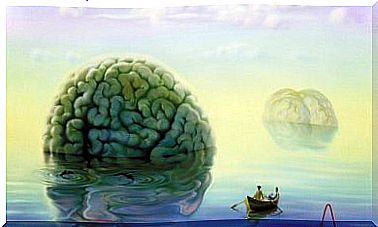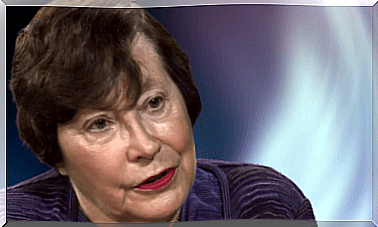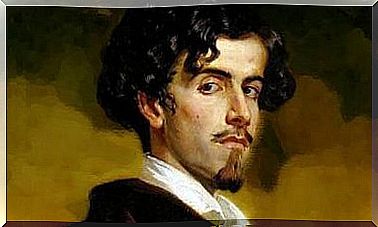José De Espronceda: Biography Of A Romantic Poet
José de Espronceda was one of the greatest Spanish poets of the Romantic period. His poetry consists of contrasts, descriptions, and an abundance of adjectives. The Espronceda was inspired by historical figures and legendary stories.
He was a rebellious and desperate romantic who also took part in politics. Espronceda worked with many sub-styles. He wrote e.g. novel by Sancho Saldaña, and also plays and numerous articles in newspapers. But he is best known for his poems.
In this article, we encourage our readers to explore the life and works of José de Espronceda.

The life of José de Espronceda
José de Espronceda was born in Almendralejo, Extremadura, Spain, in 1808. Politics and literature left their mark on his life. As a young man, he tried to avenge the death of Rafael del Riego. He founded a secret revolutionary association that would make him the head of the monastery. It was at that time that he began working on “Pelayon,” an epic poem about the reign of Muslims in Spain.
The contrast between his thoughts and reality about his homeland led to his exile. First he moved to Gibraltar, then to Lisbon and lastly to London. He was imprisoned several times for his ideology. After his visit to Paris, he returned to Spain.
Lord Byron had a clear influence on Espronceda. Both spoke of Plato and Horace, both explained the origin of their poems and were inspired by Aristotle. Literary critic Esteban Pujals explored this relationship in his book Espronceda and Lord Byron (1951). Here he also pointed out that while Byron stands out in epic and narrative aspects, Espronceda stands out by far as a lyrical poet.
As with his writing career, he also took part in politics. As a result, during his last months of life, he was a Progressive Party MP. Espronceda died young at the age of 34, with diphtheria. He had achieved great success and recognition as a great poet. Thus, many people also arrived at his funeral.
Classification of poems
- Political, Patriotic, and Liberal Poems: In his poem “La Patria,” he attacks the despotism of Spanish rulers. In this same category we can find the sonnet “A la muerte torrijos y sus compañeros.”
- Poems about the hostility of the Romantics towards social pacts and their quest for absolute freedom: In this category, many poems such as “El Reo de Muerte,” “La Canción del Pirata,” or “El Verdugo” stand out from the crowd. These poems deal with the marginalized. The poem “El Canto del Cosaco” has a social and humanitarian dimension.
- Philosophical poems: In this group we can find the poems “ A Jarifa en una orgía”, “A Una Estrella” and “Himno al Sol.”
In addition to this, we could also include his transformation poem here. In other words, poems in which Espronceda imitates his role models.
Espronceda’s “songs”
A lyric poem “El Diablo Mundo” In addition, his songs (canciones) are his original works. There are a total of six of these, and each introduces us to a different kind of marginalized. His first song is in the novel Sanco Saldaña, and its name is La Cautiva. While not the most innovative, it deals with things like rebellion and submission.
“La cancion del Pirata” is the most famous of his songs. Here we can see the ecstasy of the hero of romance. The protagonist of the song is a pirate whose only goal is to live free, without being under anyone’s control. He is not happy with the values of the world, and he escapes to the sea, the most absolute freedom that exists.
This is why many consider this poem to be the first Spanish poem of the Romantic period. In addition to this, Espronceda uses protagonists to protect its own values. Just like this pirate, he loves justice and above all freedom. In the song “El Verdugo,” he condemns injustice and overly harsh punishments in the justice system. He appeals to penalties appropriate to the crimes.
His heroes are symbolic reflections of the poet’s own self. They represent symbols of individual rebellion against bourgeois wealth that lack sensitivity. That is why he chooses the marginalized for this, such as a beggar or a pirate who live outside established norms. They condemn things they don’t like in this world. The Espronceda takes the side of the heroes who represent freedom.

Extensive poems by José de Espronceda
“El Estudiante de Salamanca”
“El Estudiante de Salamanca” (1840) is an extensive narrative poem that deals with Don Felix’s obsession with courting any woman in any situation. It consists of four parts: the presentation of the hero, the portrait of the victim, Mrs. Elvira, revenge and the death of the avenger, and the nightly twist of Salamanca. This work highlights some of the main features of romance, such as self-praise, love of contrasts, absolute freedom, and so on.
In this poem, female hero Don Felix falls in love with Doña Elvira. However, he forgets Elvira the next day, leaving Elvira to feel the deep pain that comes with her death. Don Diego, Elvira’s brother, tries to avenge his sister’s death. From that moment on, the story comes with magic. Supernatural events take place during the night, and mysteries take a grip on these verses.
”El Diablo Mundo
“El Diablo Mundo” is a work that José de Espronceda began writing in 1839, but he never completed it. It is one of the most interesting and ambitious poems. It reflects Espronceda’s pessimism in his final years.
It condemns the Conservatives and investigates things like freedom, the existence of God, etc. According to Espronceda, there is evil around every corner, even in people’s hearts. Hypocrisy and the ignorance of the pain of others have corrupted society. In this world, freedom does not seem to exist, and there is no room for purity or innocence.
“El Diablo Mundo” is a poem about rebellion against established order and the laws that govern the world. In his verses, Espronceda has succeeded in expressing a desire for individual freedom.









